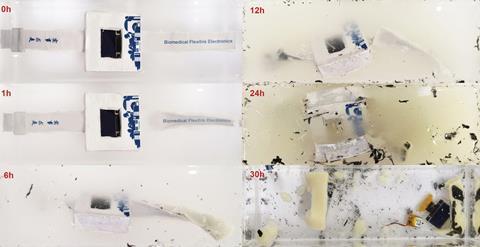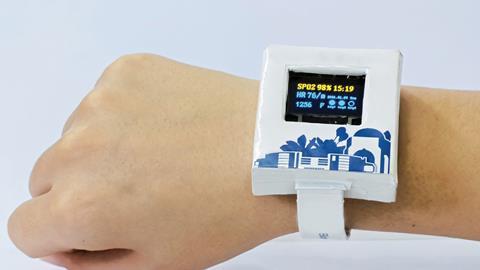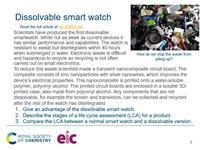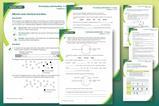How can we recycle small electronic devices better?
A one-slide summary of this article with questions to use with your 14–16 students: rsc.li/3lvOAWk
Scientists from Tianjin University have produced the first dissolvable smartwatch. While not as sleek as current devices, it has similar performance and capabilities. The watch is resistant to sweat but disintegrates within 40 hours when submerged in water.

Electronic waste is difficult and hazardous to recycle so it is often not worth doing for small electronics. To reduce this waste, scientists made a transient nanocomposite circuit board. Transient materials are not designed to last – in this case, the material dissolves in water into environmentally friendly compounds.
Put this in context
Add context and highlight diverse careers with our short career videos showing how chemistry is making a difference and let your learners be inspired by chemists like Lizzie, a PhD researcher.
The composite consists of zinc nanoparticles with silver nanowires, which improve the device’s electrical properties. This nanocomposite is screen printed onto a water-soluble polymer called polyvinyl alcohol. The printed circuit boards are enclosed in a soluble 3D-printed case, also made from polyvinyl alcohol. Any components that are not dissolvable, for example the screen and transistors, can be collected and recycled after the rest of the watch has disintegrated.
This dissolvable smartwatch can carry out many of the same functions as current non-dissolvable devices: monitoring heart rate and step count, as well as displaying messages from phones connected via Bluetooth.
Read the full story in Chemistry World.
Downloads
EiC starter slide dissolvable smart watch
Presentation | PDF, Size 0.25 mbEiC starter slide dissolvable smart watch
Presentation | PowerPoint, Size 5.71 mb
















No comments yet